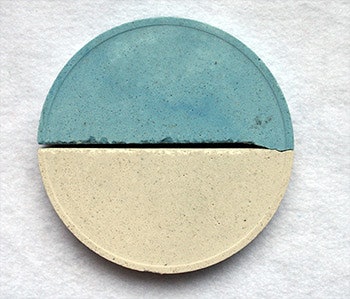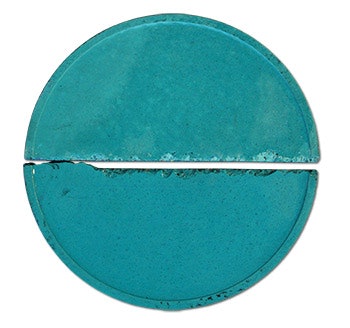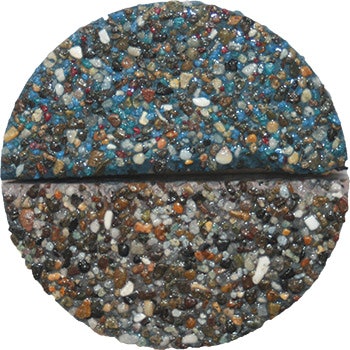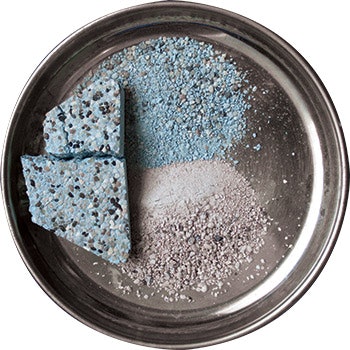



Why do pools with black or blue plaster sometimes lose their color? Que Hales and his colleagues at onBalance, an industry group dedicated to researching plaster-related issues, decided to study the question in pursuit of definitive answers. Here’s what they found:
As swimming pools have become more aesthetically sophisticated, the color of interior surfaces has emerged as an element of greater and greater importance to designers, builders, plasterers, service technicians and homeowners. The plain fact is pools that are something other than white have dramatically increased in numbers over the past two decades or longer.
All of that is why it’s not surprising that on multiple occasions, we at onBalance have been involved in poolside inspections where blue or black plaster has lost some or all of its color. We’ve seen black pools that have faded to gray and blue pools that have faded to gray or white. Some of the pools were standard colored plaster, while others were exposed aggregate pools with integrally tinted cement combined with various aggregate combinations.
When homeowners see their color fade or even disappear, they understandably demand answers and solutions. Oftentimes, they turn to the pros from the pool plaster company, who in turn blame the loss of color on improper pool water chemical balance. However, we believe that explanation betrays a range of issues that have equal or greater impact on plaster performance.
Given the allegations that improper chemical maintenance contributed to the loss of color, onBalance evaluated pool surfaces for etching, the primary telltale sign of aggressive water.
Of the cases we investigated, not a single pool’s plaster was visually etched, yet the color had faded anyway. Reviews of the chemical maintenance logs also failed to indicate that etching conditions had been a factor. Therefore, based on information we’ve seen in the field, aggressive chemistry could not have caused such fading of color, nor would soft or acidic fill water.
It’s useful to note that there are countless examples of colored plaster that has been exposed to extremely aggressive conditions — acid washing or low pH start ups as common examples — and the color remained unchanged.
All of that is why we determined something other than aggressive water was clearly in play causing the plaster to lose its color. So what’s causing the problem?
A DEEPER LOOK
To draw a more accurate bead on the causes, onBalance removed plaster from several of these pools and performed analyses of two key factors – chloride content and colorfastness.
First, in each of the analyses we performed, varying amounts of chloride were present; sufficient enough to reasonably deduce that calcium chloride was used in these pools as a set accelerant.
This test involves pulverizing a sample of the plaster, dissolving it into a solution, and then titrating that solution for chloride ion. A mathematical calculation is then applied to convert that titration value to a ratio of calcium chloride dehydrate to cement in the plaster paste.
In many of these pools, we also found that the dye used in the plaster formulation was not colorfast in the presence of chlorine. That test involves pulverizing a sample of the plaster and dissolving it into a solution of water containing sodium hypochlorite.
We found that plaster tinted with most inorganic dyes were colorfast to bleaching and thus will remain the same color when comparing the “before and after” samples, or unbleached pulverized plaster compared to the same pulverized plaster after bleach exposure.
By contrast, plaster tinted with organic dyes will almost always turn white after exposure to the hypochlorite solution. Also, because some plaster contains a primary color using an organic dye, and some secondary inorganic dye as a “back-up” color, those samples will turn from black to light gray, or blue to light gray, due to the presence of the organic colorants.
INSTALLATION GUIDELINES
A review of cement/concrete industry literature, as well as many color-dye manufacturer’s warnings and instructions, clearly shows that adding color to cement batches can be successful when done correctly. However, when it is done incorrectly, it is prone to bleeding, fading or discoloration associated with wet finishing or other placement, finishing and curing irregularities.
Most color manufacturers specifically warn the applicator to avoid using integral color and calcium chloride in the same batch. They are incompatible. Many also advise that wet finishing and non-uniform curing will cause irregular coloration of the finished product. Yet, as mentioned above, all of the samples contained calcium chloride.
Yes, it is true that there are some types of staining or deposits that lighten surface color. Such stains or deposits generally can be removed either chemically or abrasively.
It is our experience, however, that when the actual colored plaster fades, especially if the plaster surface is relatively smooth and un-etched, the color loss is generally always due to either chloride admixture incompatibility, adverse finishing practices (read the label!) or the use of organic dyes – or a combination of these factors.
INVITING DIALOGUE
We at onBalance are keenly aware of the controversies and strongly held views that people in our industry hold when it comes to plaster issues and the effects of water chemistry or the lack thereof. Time and time again, we’ve seen those passions result in heated debates as a result of our research and conclusions.
As is the case with other issues we’ve examined, we always invite other industry members and organizations to replicate our tests, as well as develop their own protocols and draw their own conclusions. These are impactful issues that warrant open and fair-minded debate.
In the case of the colorfastness issue, the work we’ve done coupled with the preponderance of recommendations from the concrete and color industries, we believe, points to very specific issues cited just above.
That being said, we wholeheartedly invite others to join the discussion.
Comments or thoughts on this article? Please e-mail [email protected].







































